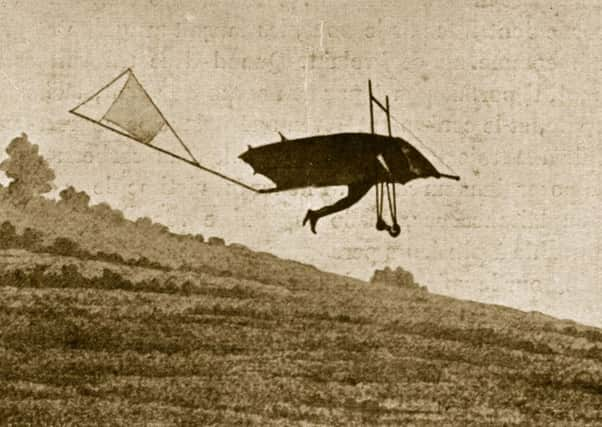Britain's oldest aircraft restored for Edinburgh exhibit


Pilcher’s Hawk, which was designed and built by aviation pioneer Percy Pilcher in 1896, has been fully restored by experts at the National Museum of Scotland and will be unveiled this summer.
Part of a £14 million expansion project, the glider will be hung from the ceiling in one of the museum’s ten new galleries.
Advertisement
Hide AdAdvertisement
Hide AdSpecialists said they hoped the new exhibit – which will soar over the heads of visitors along with a collection of five other historic planes – would inspire a new generation of engineers.
Louise Innes, the museum’s principal curator of transport, said: “It’s an amazing aircraft to actually have survived.
“It’s just made from bamboo and fabric and weighs about 22 kilos – it’s a fragile thing. To be able to hang it up again, we have had to do a lot of very careful work. It’s taken about a year-and-a-half.
“We hope to inspire a new generation of engineers. We want to encourage young people into engineering – in particular, young women.”
Advertisement
Hide AdAdvertisement
Hide AdPercy Pilcher was born in Bath in 1867 but later moved to Glasgow, where he worked first as a shipyard engineering apprentice then as an assistant lecturer at Glasgow University. Fascinated by the way birds fly, he is widely credited as being the first man in Britain to take up hang gliding and created a series of gliders of his own – the Bat, Beetle, Gull and finally the Hawk.
The latter was completed by mid-March 1896 and Pilcher made several successful flights in it, along with his sister, Ella Pilcher, and his cousin, Dorothy Rose Pilcher.
The contraption spanned 24ft 8in and weighed 50lb, with bamboo used extensively in its structure and around 100 bracing wires maintaining the wing’s umbrella-like camber.
As well as creating his gliders, Pilcher is believed to have been well on his way to developing powered flight years before the Wright brothers managed the feat in 1903. He was set to demonstrate a powered triplane on September 30, 1899, but was prevented by a mechanical fault. Fatefully, he instead took the Hawk up for one last flight in stormy weather.
Advertisement
Hide AdAdvertisement
Hide AdAfter rising to between 30 and 60 feet, a snap was heard and the glider’s tail was seen to collapse, with the machine then somersaulting forwards as the wings folded up. Pilcher was trapped under the wreckage and died three days later.
The Hawk, meanwhile, was preserved by the Aeronautical Society of Great Britain – now the Royal Aeronautical Society – before being passed to the National Museum of Scotland.